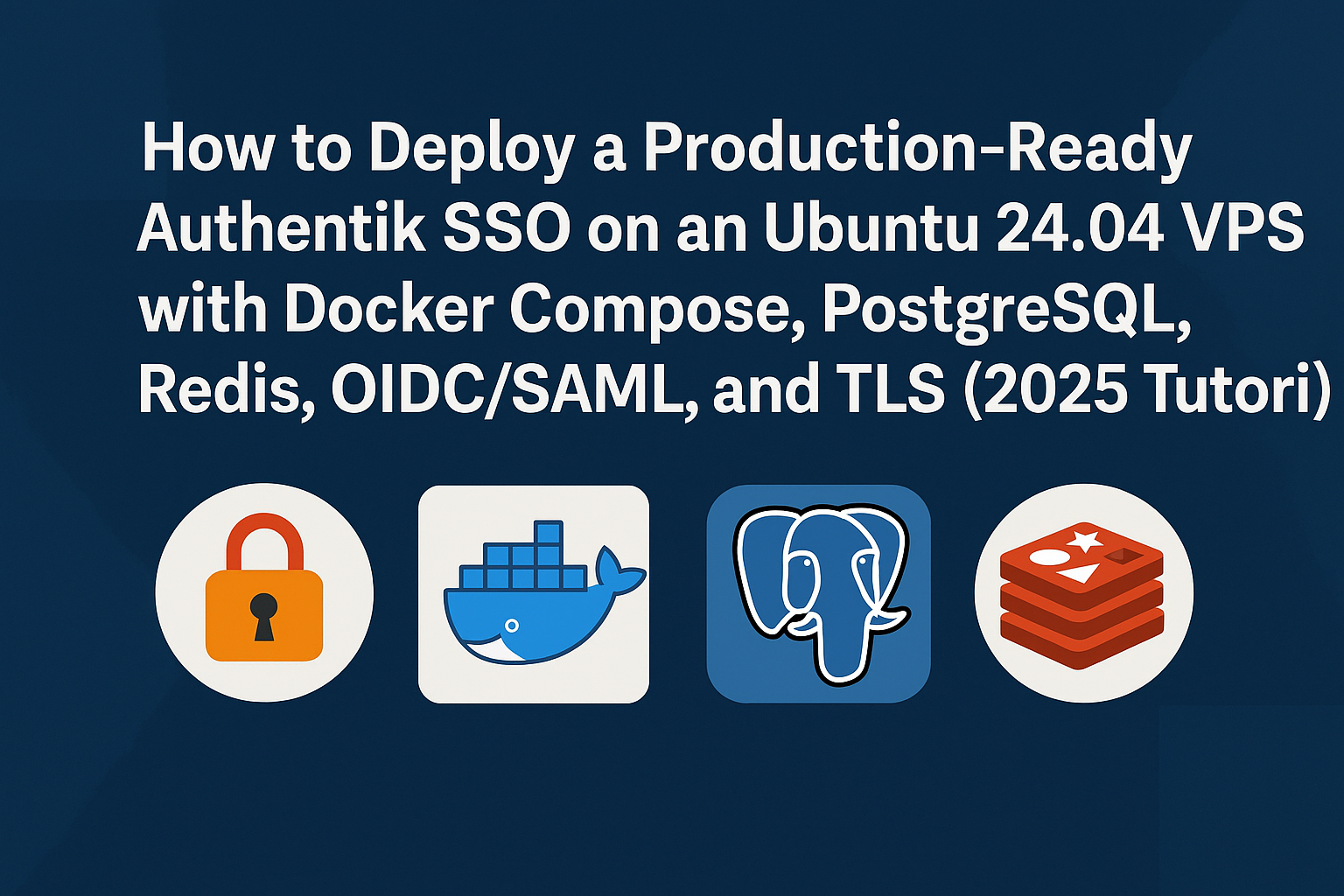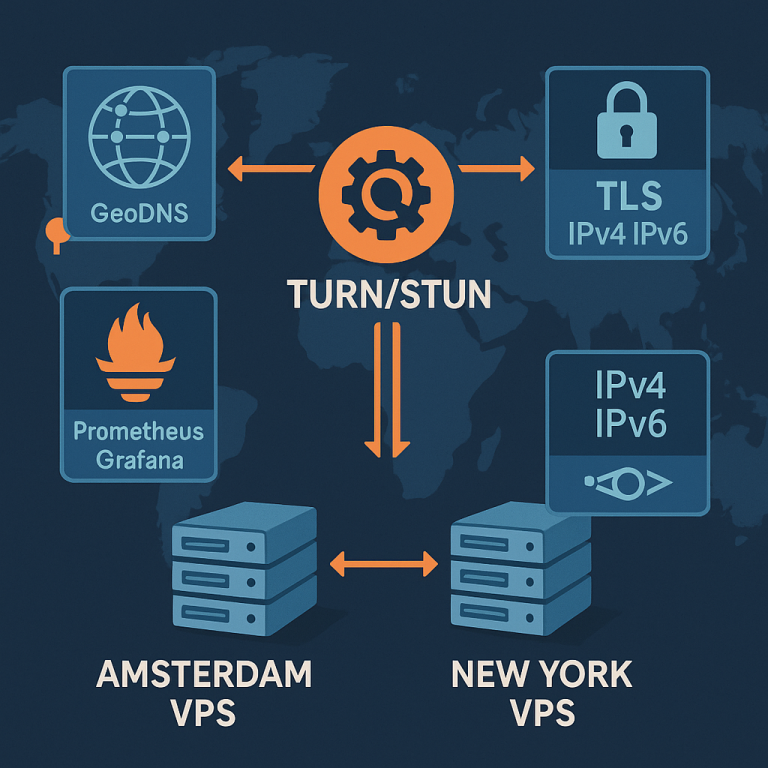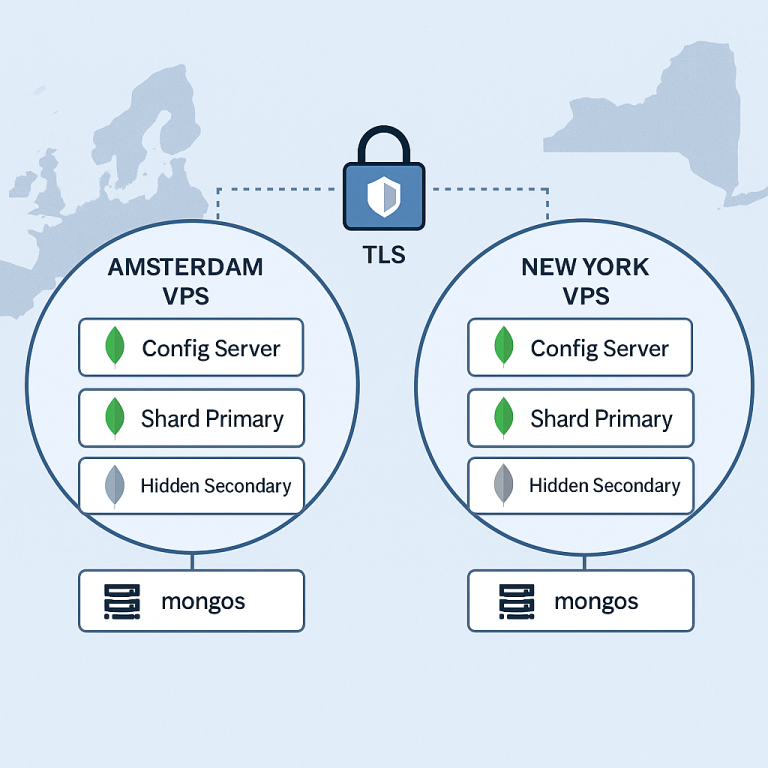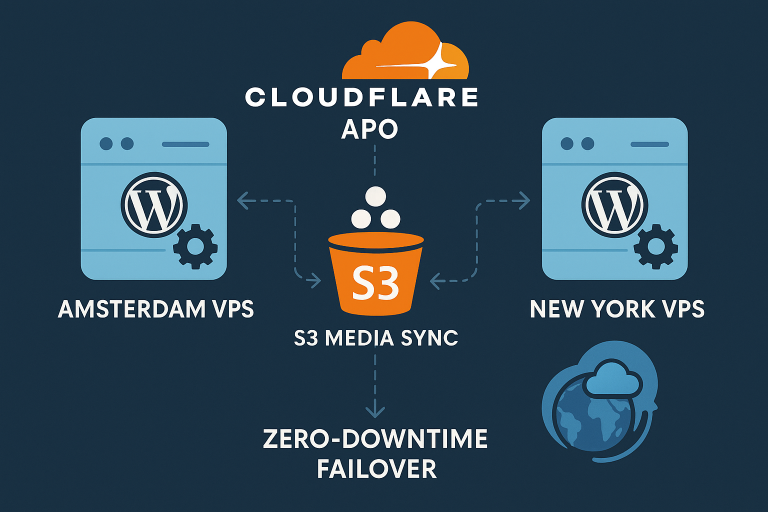Introduction
Single Sign-On (SSO) has become essential for modern organizations managing multiple applications and services. Authentik is an open-source identity provider that offers comprehensive authentication and authorization capabilities, supporting both OIDC and SAML protocols. Unlike traditional authentication systems, Authentik provides a modern, flexible approach to identity management with features like multi-factor authentication, user self-service, and extensive integration options.
In this comprehensive tutorial, we’ll deploy a production-ready Authentik SSO server on Ubuntu 24.04 LTS using Docker Compose. Our setup will include PostgreSQL for persistent data storage, Redis for session management and caching, proper TLS encryption, and configuration for both OIDC and SAML authentication flows.
By the end of this guide, you’ll have a fully functional authentication server capable of handling enterprise-grade SSO requirements with proper security hardening and high availability considerations.
Prerequisites
Before starting this deployment, ensure you have the following requirements:
- VPS Requirements: Minimum 4GB RAM, 2 vCPUs, and 40GB storage running Ubuntu 24.04 LTS
- Domain Name: A registered domain with DNS control (e.g.,
auth.yourdomain.com) - Docker and Docker Compose: Latest versions installed on your system
- SSL Certificate: Let’s Encrypt or commercial certificate for TLS termination
- Root Access: Sudo privileges on the target Ubuntu 24.04 server
- Network Access: Ports 80, 443, and 9000 open for web traffic and Authentik management
For optimal performance, we recommend using an Onidel VPS in Singapore with high-performance EPYC Milan processors and NVMe storage, which provides excellent latency for authentication workloads across Asia-Pacific regions.
Step-by-Step Tutorial
Step 1: System Preparation and Docker Installation
First, update your Ubuntu 24.04 system and install the necessary dependencies:
# Update system packages
sudo apt update && sudo apt upgrade -y
# Install required packages
sudo apt install -y curl wget gnupg lsb-release ca-certificates
# Install Docker
curl -fsSL https://download.docker.com/linux/ubuntu/gpg | sudo gpg --dearmor -o /usr/share/keyrings/docker-archive-keyring.gpg
echo "deb [arch=amd64 signed-by=/usr/share/keyrings/docker-archive-keyring.gpg] https://download.docker.com/linux/ubuntu $(lsb_release -cs) stable" | sudo tee /etc/apt/sources.list.d/docker.list > /dev/null
sudo apt update
sudo apt install -y docker-ce docker-ce-cli containerd.io docker-compose-plugin
# Start and enable Docker
sudo systemctl enable docker
sudo systemctl start docker
# Add user to docker group
sudo usermod -aG docker $USER
newgrp dockerStep 2: Directory Structure and Environment Setup
Create the necessary directory structure for our Authentik deployment:
# Create project directory
mkdir -p /opt/authentik/{database,redis,certs,media}
cd /opt/authentik
# Set proper permissions
sudo chown -R $USER:$USER /opt/authentik
chmod 755 /opt/authentikStep 3: Docker Compose Configuration
Create a comprehensive docker-compose.yml file with PostgreSQL, Redis, and Authentik services:
version: '3.8'
services:
postgresql:
image: postgres:16-alpine
restart: unless-stopped
healthcheck:
test: ["CMD-SHELL", "pg_isready -d ${POSTGRES_DB} -U ${POSTGRES_USER}"]
start_period: 20s
interval: 30s
retries: 5
timeout: 5s
volumes:
- ./database:/var/lib/postgresql/data
environment:
POSTGRES_PASSWORD: ${PG_PASS}
POSTGRES_USER: authentik
POSTGRES_DB: authentik
networks:
- internal
redis:
image: redis:7-alpine
command: --save 60 1 --loglevel warning
restart: unless-stopped
healthcheck:
test: ["CMD-SHELL", "redis-cli ping | grep PONG"]
start_period: 20s
interval: 30s
retries: 5
timeout: 3s
volumes:
- ./redis:/data
networks:
- internal
server:
image: ghcr.io/goauthentik/server:2024.2.2
restart: unless-stopped
command: server
environment:
AUTHENTIK_REDIS__HOST: redis
AUTHENTIK_POSTGRESQL__HOST: postgresql
AUTHENTIK_POSTGRESQL__USER: authentik
AUTHENTIK_POSTGRESQL__NAME: authentik
AUTHENTIK_POSTGRESQL__PASSWORD: ${PG_PASS}
AUTHENTIK_SECRET_KEY: ${AUTHENTIK_SECRET_KEY}
AUTHENTIK_ERROR_REPORTING__ENABLED: false
AUTHENTIK_DISABLE_UPDATE_CHECK: true
AUTHENTIK_DISABLE_STARTUP_ANALYTICS: true
volumes:
- ./media:/media
- ./certs:/certs
ports:
- "9000:9000"
- "9443:9443"
depends_on:
- postgresql
- redis
networks:
- internal
- web
worker:
image: ghcr.io/goauthentik/server:2024.2.2
restart: unless-stopped
command: worker
environment:
AUTHENTIK_REDIS__HOST: redis
AUTHENTIK_POSTGRESQL__HOST: postgresql
AUTHENTIK_POSTGRESQL__USER: authentik
AUTHENTIK_POSTGRESQL__NAME: authentik
AUTHENTIK_POSTGRESQL__PASSWORD: ${PG_PASS}
AUTHENTIK_SECRET_KEY: ${AUTHENTIK_SECRET_KEY}
AUTHENTIK_ERROR_REPORTING__ENABLED: false
volumes:
- ./media:/media
- ./certs:/certs
depends_on:
- postgresql
- redis
networks:
- internal
networks:
internal:
internal: true
web:
external: trueStep 4: Environment Variables and Security Configuration
Create a secure .env file with strong credentials:
# Generate secure passwords and keys
PG_PASS=$(openssl rand -base64 32)
AUTHENTIK_SECRET_KEY=$(openssl rand -base64 64)
# Create .env file
cat > .env << EOF
PG_PASS=${PG_PASS}
AUTHENTIK_SECRET_KEY=${AUTHENTIK_SECRET_KEY}
AUTHENTIK_DOMAIN=auth.yourdomain.com
EOF
# Secure the file
chmod 600 .envStep 5: Reverse Proxy and TLS Configuration
For production deployments, we’ll use Caddy as a reverse proxy with automatic HTTPS. Create a Caddyfile:
cat > Caddyfile << 'EOF'
auth.yourdomain.com {
reverse_proxy server:9000 {
header_up X-Forwarded-Proto {scheme}
header_up X-Forwarded-For {remote}
header_up Host {host}
}
# Security headers
header {
Strict-Transport-Security "max-age=63072000; includeSubDomains; preload"
X-Content-Type-Options nosniff
X-Frame-Options DENY
Referrer-Policy strict-origin-when-cross-origin
}
# Enable compression
encode gzip
}
EOFAdd Caddy to your docker-compose.yml:
caddy:
image: caddy:2.7-alpine
restart: unless-stopped
ports:
- "80:80"
- "443:443"
volumes:
- ./Caddyfile:/etc/caddy/Caddyfile:ro
- caddy_data:/data
- caddy_config:/config
networks:
- web
depends_on:
- server
volumes:
caddy_data:
caddy_config:Step 6: Deployment and Initial Setup
Deploy the complete Authentik stack:
# Create external network
docker network create web
# Deploy the stack
docker compose up -d
# Monitor startup logs
docker compose logs -f server
# Wait for services to be healthy
docker compose psStep 7: Authentik Initial Configuration
Access your Authentik instance at https://auth.yourdomain.com/if/flow/initial-setup/ and complete the initial setup wizard. Create your admin account and configure basic tenant settings.
Step 8: OIDC Provider Configuration
Configure an OIDC provider for modern applications:
- Navigate to Applications → Providers
- Create a new OAuth2/OpenID Provider
- Set the authorization flow and configure scopes
- Note the client ID and secret for application integration
Step 9: SAML Provider Setup
For legacy applications requiring SAML authentication:
- Create a SAML Provider in the providers section
- Configure the ACS URL and audience for your target application
- Download the SAML metadata for application configuration
- Set up attribute mappings as required
Best Practices
Database Optimization: Consider implementing connection pooling with PgBouncer for high-traffic environments. Regular database maintenance and proper indexing are crucial for authentication performance.
Security Hardening: Enable multi-factor authentication for all admin accounts, implement proper session timeouts, and regularly audit user permissions. Consider using CrowdSec for additional protection against authentication attacks.
Backup Strategy: Implement automated backups for both PostgreSQL data and Authentik configuration. Use encrypted backup solutions with regular restore testing.
Monitoring and Observability: Set up comprehensive monitoring for authentication metrics, failed login attempts, and system resource usage. Consider deploying a full observability stack for production environments.
High Availability: For critical environments, consider deploying multiple Authentik instances behind a load balancer with shared PostgreSQL and Redis clusters for redundancy.
Conclusion
You’ve successfully deployed a production-ready Authentik SSO server with comprehensive authentication capabilities. This setup provides enterprise-grade identity management with support for both modern OIDC and legacy SAML applications, backed by reliable PostgreSQL storage and Redis caching.
Your Authentik deployment now offers centralized user management, multi-factor authentication, and seamless integration with various applications and services. The containerized architecture ensures easy maintenance and scalability as your authentication needs grow.
For optimal performance and reliability, consider exploring Onidel’s high-performance VPS offerings with enterprise features like automated backups, advanced networking, and dedicated resources that perfectly complement identity management workloads.





